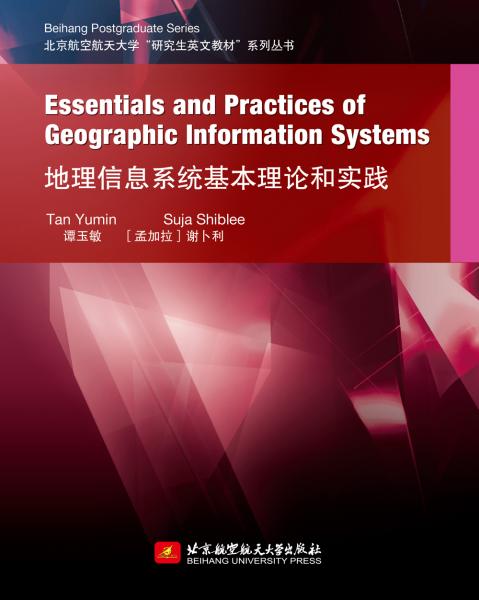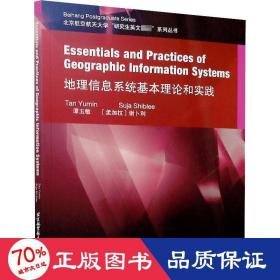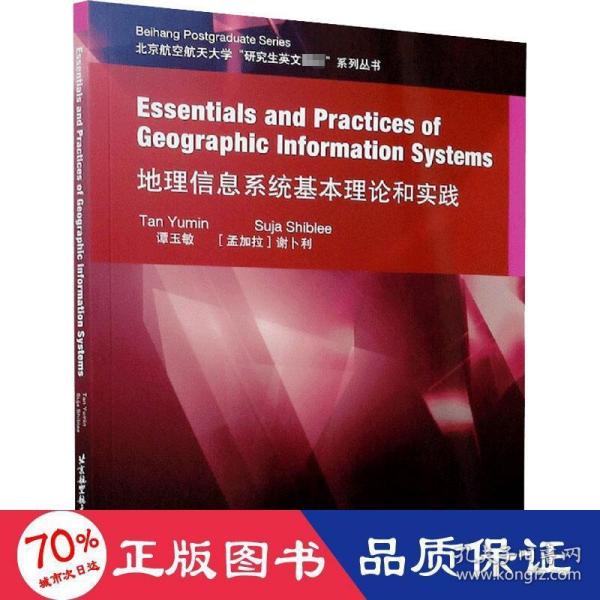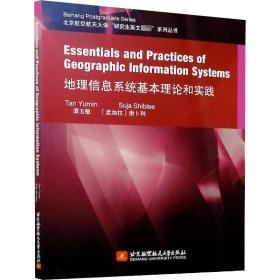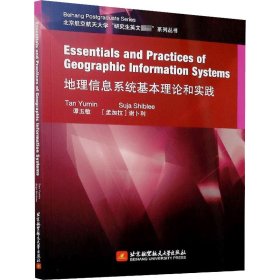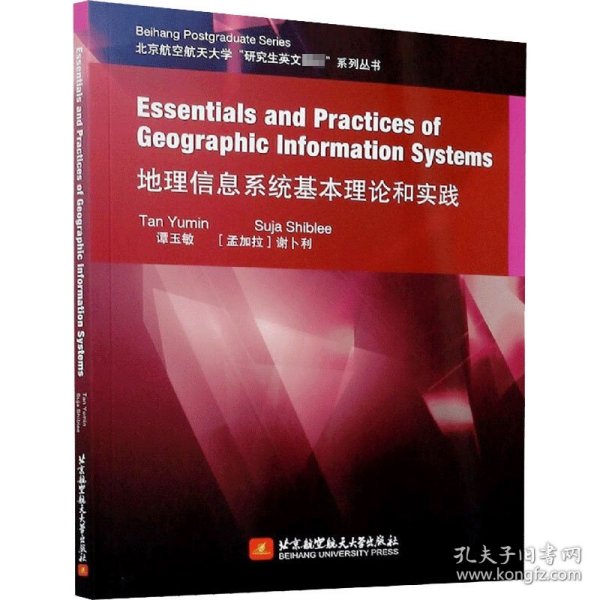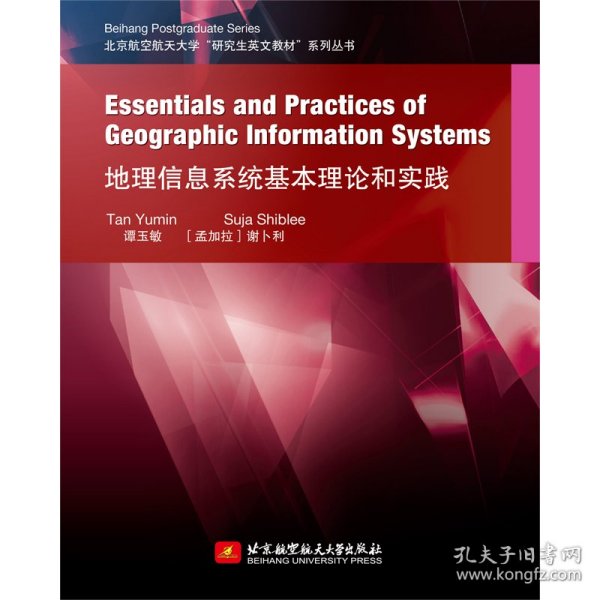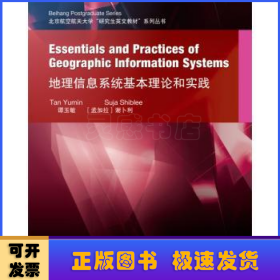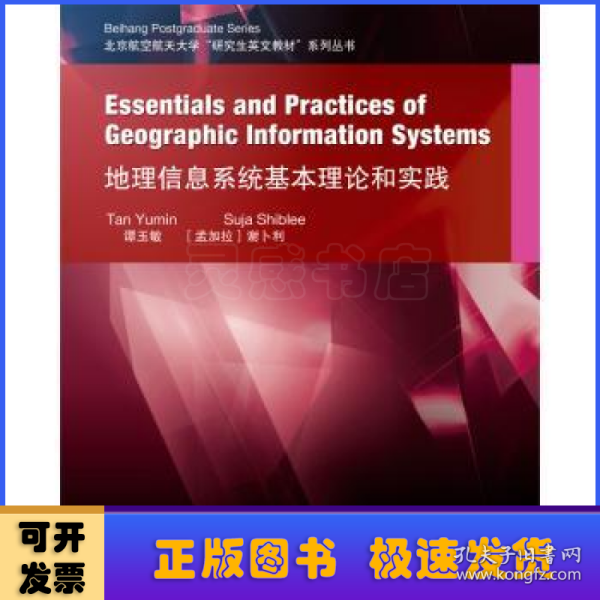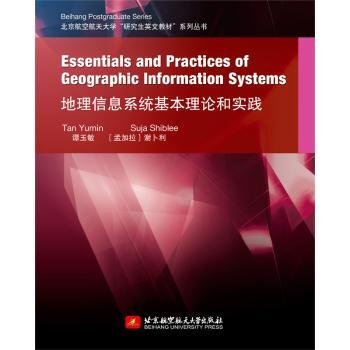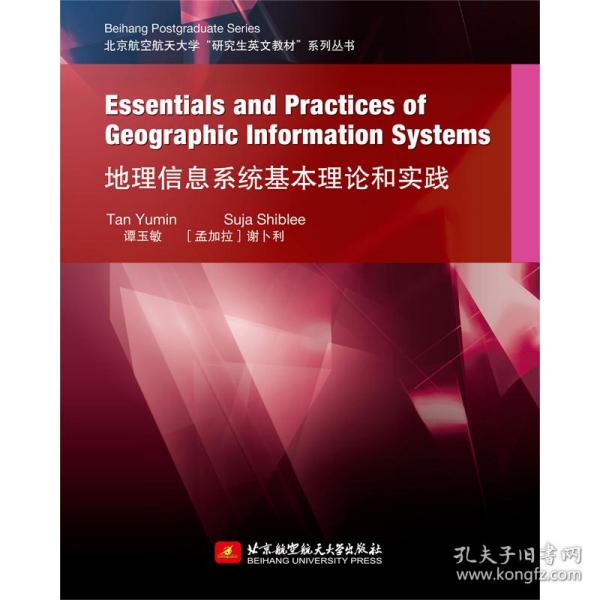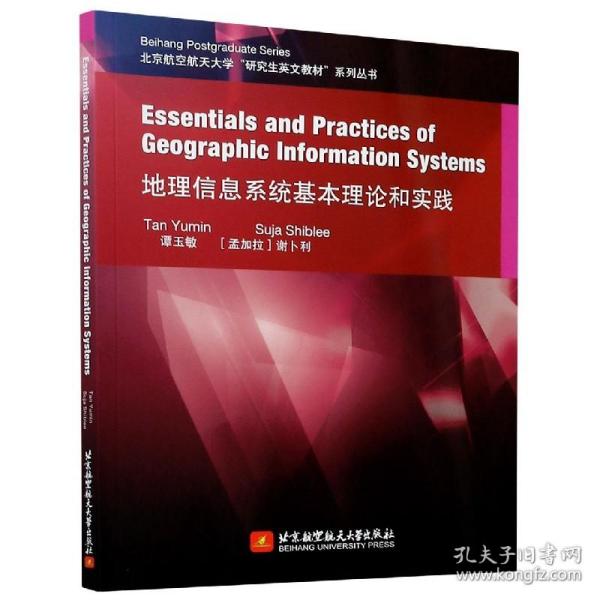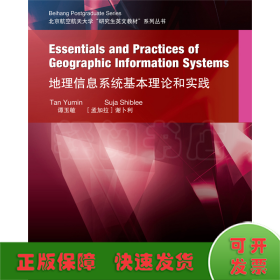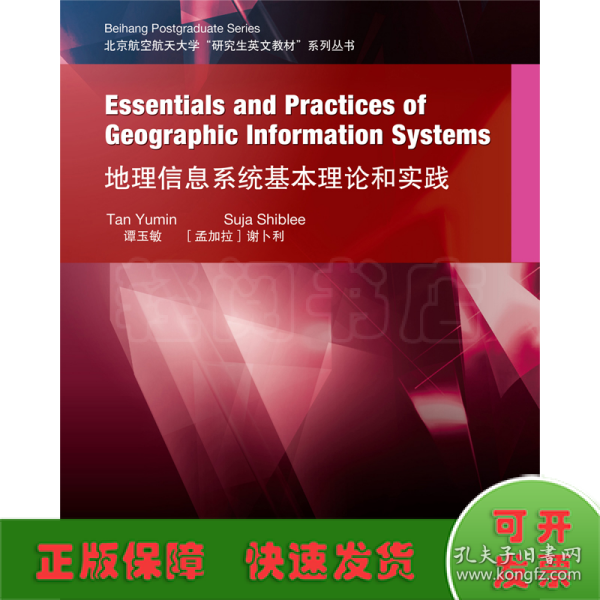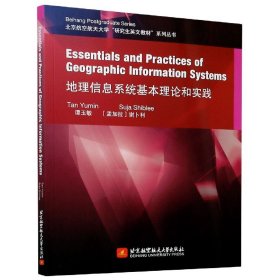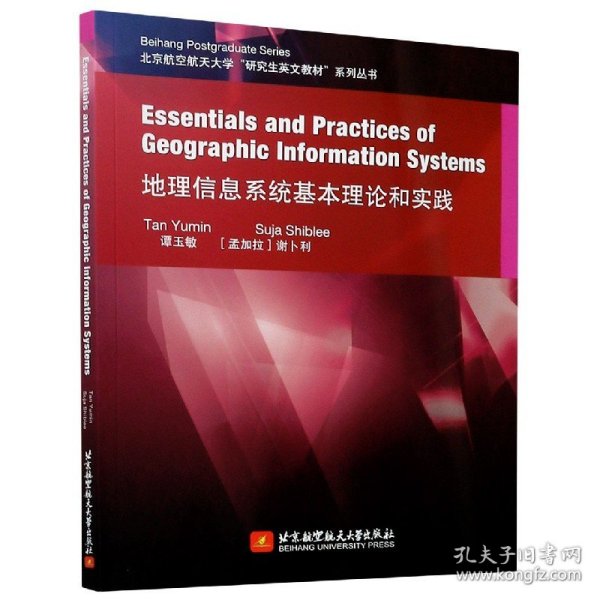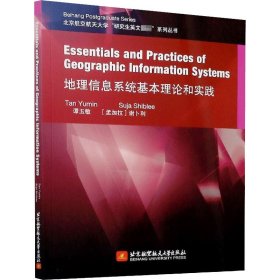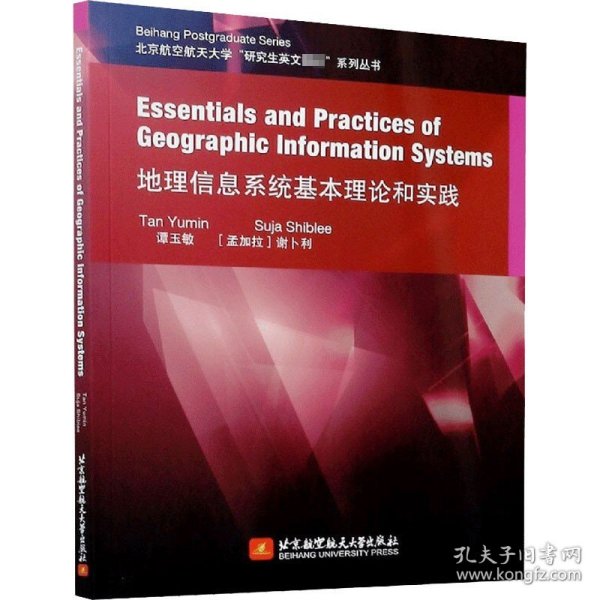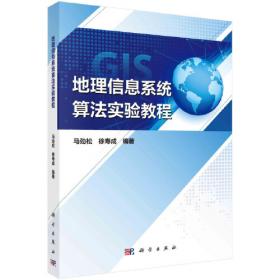地理信息系统基本理论和实践(英文)
出版时间:
2020-04
版次:
1
ISBN:
9787512432741
定价:
59.00
装帧:
平装
开本:
16开
纸张:
胶版纸
页数:
199页
-
This book is an introductory level GIS book. Its feature lies in that not only main basic knowledge in traditional GIS are included, like mathematical basis, geographic data model, vector and raster data analysis,spatial statistics, and network analysis, as a typical GIS application is also included as a separate chapter, but also GIS customization using Python, GIS integration with remote sensing, and Web GIS, especially Cloud GIS, are included.
This book is written for undergraduate students in GIS related major, and graduate students who have some geo-spatial knowledge or skills but want to do related research, and it is also suitable for those who desire to obtain a rich beginning understanding of how GIS is used, and for those people who have already had certain skills in other fields. Chapter 1 Introduction to GIS
1.1 Definition of GIS
1.2 GIS Components
1.3 Understanding GIS
1.4 History of GIS
1.5 Applications of GIS
1.6 GIS Today and Tomorrow
1.6.1 GIS today
1.6.2 GIS tomorrow
Conceptual Questions on This Chapter
Chapter 2 Mathematical Basis of GIS
2.1 Introduction
2.2 Basics of Geodesy
2.2.1 Terrain/topography
2.2.2 Geodetic surfaces
2.2.3 Datum
2.3 Coordinate System
2.3.1 Geographic coordinate system
2.3.2 Projected coordinate system
2.4 Map Projection
2.4.1 Projection distortion
2.4.2 Commonly used map projections in GIS
2.5 Image Registration
2.5.1 What is image registration?
2.5.2 Image registration methodology
2.6 Georeferencing
2.6.1 Georeferencing of raster images
2.6.2 Georeferencing of vector data
2.6.3 Georeferencing practices
Conceptual Questions on This Chapter
……
Chapter 3 Geographic Data Model
Chapter 4 Vector Spatial Analysis
Chapter 5 Raster Spatial Analysis
Chapter 6 Spatial Statistics
Chapter 7 Network Analysis
Chapter 8 GIS Customization Using Python
Chapter 9 Integration of GIS & Remote Sensing
Chapter 10 Introduction to Web GIS and Cloud GIS
References
-
内容简介:
This book is an introductory level GIS book. Its feature lies in that not only main basic knowledge in traditional GIS are included, like mathematical basis, geographic data model, vector and raster data analysis,spatial statistics, and network analysis, as a typical GIS application is also included as a separate chapter, but also GIS customization using Python, GIS integration with remote sensing, and Web GIS, especially Cloud GIS, are included.
This book is written for undergraduate students in GIS related major, and graduate students who have some geo-spatial knowledge or skills but want to do related research, and it is also suitable for those who desire to obtain a rich beginning understanding of how GIS is used, and for those people who have already had certain skills in other fields.
-
目录:
Chapter 1 Introduction to GIS
1.1 Definition of GIS
1.2 GIS Components
1.3 Understanding GIS
1.4 History of GIS
1.5 Applications of GIS
1.6 GIS Today and Tomorrow
1.6.1 GIS today
1.6.2 GIS tomorrow
Conceptual Questions on This Chapter
Chapter 2 Mathematical Basis of GIS
2.1 Introduction
2.2 Basics of Geodesy
2.2.1 Terrain/topography
2.2.2 Geodetic surfaces
2.2.3 Datum
2.3 Coordinate System
2.3.1 Geographic coordinate system
2.3.2 Projected coordinate system
2.4 Map Projection
2.4.1 Projection distortion
2.4.2 Commonly used map projections in GIS
2.5 Image Registration
2.5.1 What is image registration?
2.5.2 Image registration methodology
2.6 Georeferencing
2.6.1 Georeferencing of raster images
2.6.2 Georeferencing of vector data
2.6.3 Georeferencing practices
Conceptual Questions on This Chapter
……
Chapter 3 Geographic Data Model
Chapter 4 Vector Spatial Analysis
Chapter 5 Raster Spatial Analysis
Chapter 6 Spatial Statistics
Chapter 7 Network Analysis
Chapter 8 GIS Customization Using Python
Chapter 9 Integration of GIS & Remote Sensing
Chapter 10 Introduction to Web GIS and Cloud GIS
References
查看详情
-
全新
天津市津南区
平均发货13小时
成功完成率94.38%
-
全新
山东省泰安市
平均发货22小时
成功完成率86.19%
-
全新
广东省广州市
平均发货19小时
成功完成率86.84%
-
全新
山东省泰安市
平均发货25小时
成功完成率92.53%
-
九五品
北京市通州区
平均发货24小时
成功完成率89.71%
-
全新
江苏省苏州市
平均发货9小时
成功完成率95.6%
-
全新
北京市丰台区
平均发货25小时
成功完成率87.63%
-
全新
江苏省无锡市
平均发货8小时
成功完成率96.07%
-
全新
江苏省南京市
平均发货8小时
成功完成率96.34%
-
#地理信息系统基本理论和实践
正版库存一手书,品相视出版时间长短而定,自然成色,可开电子发票,图片由软件自动采集,以书名为准,不以图片不符售后!
全新
山东省泰安市
平均发货8小时
成功完成率92.99%
-
全新
山东省潍坊市
平均发货16小时
成功完成率81.93%
-
全新
北京市房山区
平均发货32小时
成功完成率83.69%
-
全新
天津市西青区
平均发货14小时
成功完成率89.74%
-
全新
广东省广州市
平均发货18小时
成功完成率87.53%
-
全新
河北省保定市
平均发货28小时
成功完成率92.49%
-
全新
山东省泰安市
平均发货22小时
成功完成率86.19%
-
全新
河北省保定市
平均发货18小时
成功完成率82.78%
-
全新
上海市黄浦区
平均发货11小时
成功完成率94.34%
-
全新
河北省保定市
平均发货21小时
成功完成率83.13%
-
全新
河北省保定市
平均发货18小时
成功完成率81.27%
-
全新
河北省保定市
平均发货18小时
成功完成率80.73%
-
全新
江苏省无锡市
平均发货16小时
成功完成率94.48%
-
全新
北京市朝阳区
平均发货18小时
成功完成率83.33%
-
全新
北京市朝阳区
平均发货12小时
成功完成率85.8%
-
全新
北京市西城区
平均发货18小时
成功完成率91.75%
-
地理信息系统基本理论和实践
重要提醒:::重要提醒::所有图书保证正版,按书名发货图片仅供参考, 有疑问请咨询客服,看清书名按书名发货
全新
北京市通州区
平均发货9小时
成功完成率89.43%
-
全新
北京市丰台区
平均发货8小时
成功完成率90.92%
-
全新
河北省廊坊市
平均发货24小时
成功完成率86.33%
-
全新
-
全新
浙江省嘉兴市
平均发货10小时
成功完成率94.09%
-
全新
北京市东城区
平均发货25小时
成功完成率85.6%
-
全新
四川省成都市
平均发货17小时
成功完成率81.33%
-
全新
广东省广州市
平均发货8小时
成功完成率94.69%
-
全新
江苏省无锡市
平均发货16小时
成功完成率93.79%
-
2020-04 印刷
印次: 1
八五品
安徽省蚌埠市
平均发货12小时
成功完成率97.58%
-
全新
天津市河东区
平均发货24小时
成功完成率91.03%
-
全新
北京市朝阳区
平均发货9小时
成功完成率96.83%
-
全新
北京市丰台区
平均发货35小时
成功完成率69.4%
-
九五品
北京市朝阳区
平均发货13小时
成功完成率87.26%
-
九五品
北京市朝阳区
平均发货15小时
成功完成率83.2%
-
全新
浙江省嘉兴市
平均发货12小时
成功完成率92.98%
-
全新
广东省广州市
平均发货17小时
成功完成率88.79%
-
全新
北京市朝阳区
平均发货13小时
成功完成率93.48%
-
全新
河北省保定市
平均发货17小时
成功完成率81.76%
-
全新
广东省广州市
平均发货7小时
成功完成率88.97%
-
全新
河北省保定市
平均发货13小时
成功完成率88.85%
-
全新
河北省保定市
平均发货6小时
成功完成率84.01%
-
全新
广东省广州市
平均发货10小时
成功完成率87.58%
-
全新
北京市东城区
平均发货12小时
成功完成率74.03%
-
全新
江西省九江市
平均发货11小时
成功完成率79.25%

 占位居中
占位居中

